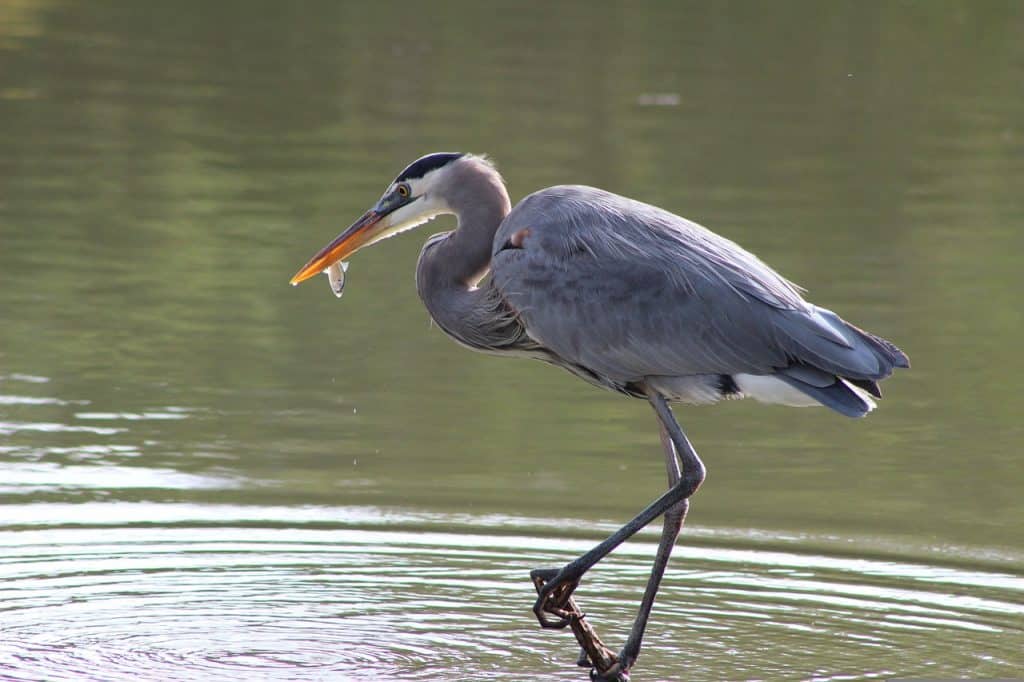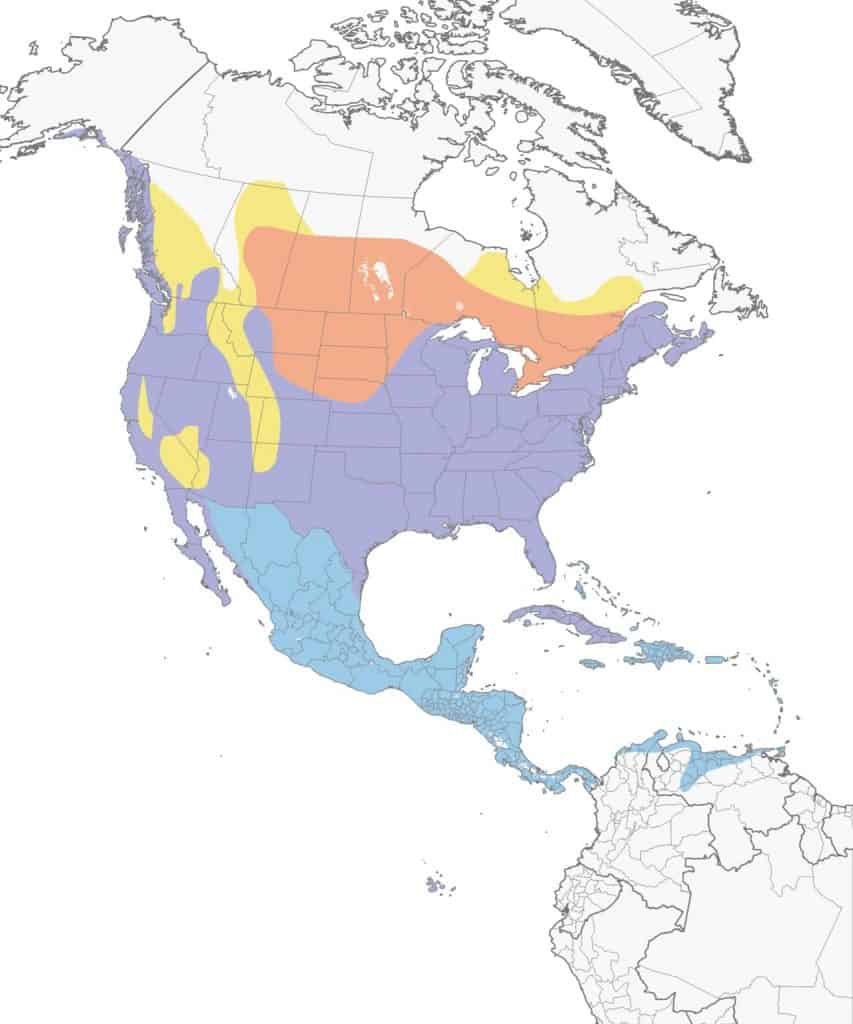
| Appearance | Great blue herons are enormous waterbirds about 45-55″ long. They have a large body with blue/gray feathers, long legs, a white face with a black streak on the cheek and crown, a long pointy orange bill, and a curvy neck which they often curl into the shape of an “S”. |
| Diet | Fish, frogs, salamanders, turtles, snakes, insects, small mammals, and birds. |
| Feeder Food | They don’t visit feeders. |
| Habitat | The Great Blue Heron is a highly adaptable bird evidenced in its wide year-round range that spans much of the US and British Columbia coast. They prefer calm freshwaters, rivers, and shallow coastal areas. |
| Nesting | Nest: A large, round platform-style nest is weaved by the female from sticks collected by the male and lined with pine needles, moss, grass, and other soft materials and placed on the ground. Brood: 1 – 2 broods/year Clutch: 2 – 6 eggs/brood Egg color: They lay large eggs ranging from pale blue to white. The lighter the color, the older the egg is. If you see near white eggs, they are close to hatching. Egg size: 2.4 – 3 inches by 2 inches Incubation: Both parents incubate the eggs for about 25-30 days. |
Range Map


